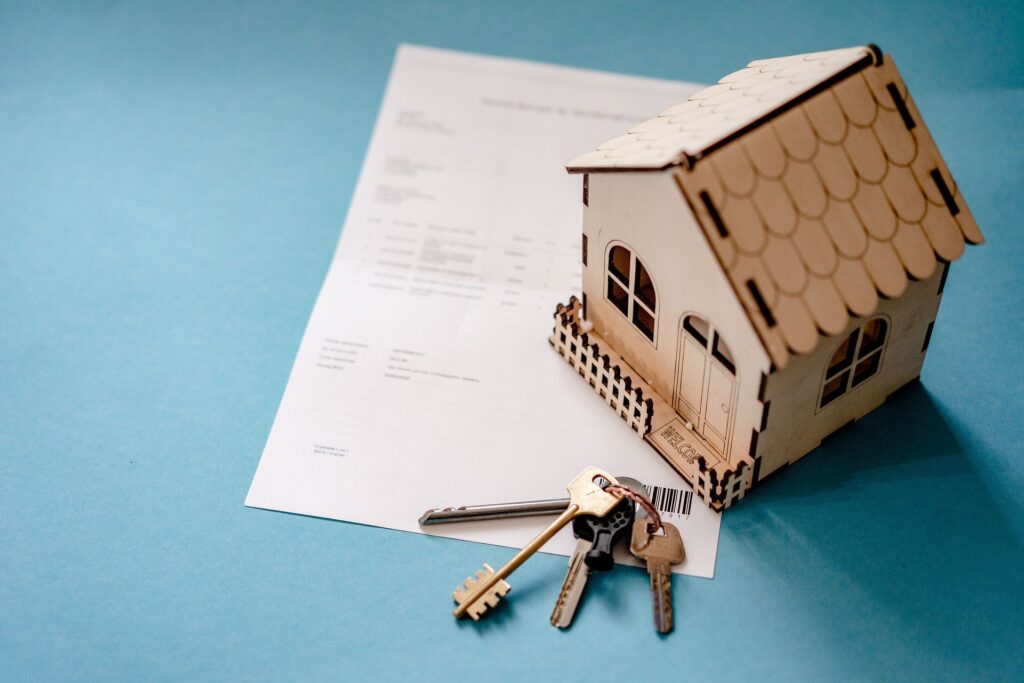If you’re a homeowner and you have a mortgage, remortgaging might be a great next step. But what exactly is remortgaging and how can you benefit from it?
Take a look at our guide to find out everything you need to know about remortgaging, from how it works to what you need to remortgage a property.
Guide Content
- What is remortgaging?
- Why should I remortgage?
- Can I remortgage with the same lender?
- How does remortgaging work?
- How long does a remortgage take?
- When can I remortgage?
- How much does it cost to remortgage?
- Do I need a deposit to remortgage?
- Do I need a solicitor to remortgage?
- Can I remortgage with a bad credit score?
What is remortgaging?
If you have a mortgage on a property, you can apply to switch it to another lender without moving house. This is known as remortgaging and it means that you can find a new deal that’s better than your current one.
You’ll continue to pay off the cost of your property, but the frequency and cost of your installments or interest will change.
Why should I remortgage?
The biggest benefit to remortgaging is that you can switch to a cheaper deal than the one that you’re already on. A mortgage is a huge financial commitment, and remortgaging can be a great way to make sure you’re always getting the most out of your money.
Some situations where you might want to consider remortgaging are when:
- – Your initial fixed-rate deal has ended and you’re going to be switched to your provider’s Standard Variable Rate (SVR). SVRs tend to be a lot more expensive than your first deal.
- – The market has changed and new, more cost-effective deals are now available to you.
- – Your financial situation has improved and you want to pay extra or increase your monthly repayments, but your current deal won’t allow for it. Remortgaging may give you the chance to reduce your loan and receive a cheaper rate.
- – You want to release equity from your home to raise money to spend on other things, like home improvements or to pay off other costs and debts.
- – You’re interested in taking out a different type of mortgage, like a more flexible mortgage that allows overpayments.
Can I remortgage with the same lender?
Absolutely, you can remortgage with your current lender. Checking if your provider can offer you a better deal than the one you’re on is a great place to start. This is because your existing lender will already have all your details on file, potentially making the remortgage process a lot quicker than switching to a new lender.
What is a product transfer?
A product transfer is when your current lender updates the terms of your existing mortgage and moves you onto another mortgage product. They may do this to offer you a more competitive option than the one you’re on to try and keep you from switching to another provider.
A product transfer is a much more straightforward process and may have lower fees, but it’s also more likely that you won’t save as much money as changing to a completely different provider.
How does remortgaging work?
There are typically two methods for remortgaging:
- – Drawing up a new deal with your existing lender
- – Switching to a new mortgage provider
If you choose to go down the route of a product transfer, the process is a lot simpler than changing providers. They can be arranged over the phone, but some lenders may request a valuation and credit check which can slow down the procedure.
For a full remortgage with a new lender, there are three main steps to take.
- Completing an Agreement in Principle (AiP)
This is the same process as when you first applied for your mortgage. It gives you an estimate as to how much you could borrow before you apply for a remortgage. This won’t be a guaranteed figure, but it’s a good way to work out how likely it is that you will be offered the amount you need.
- Applying for your remortgage
If you’re happy with the amount outlined in the AiP, your next step is to apply for it. Again, this is a similar step to when you took out your initial mortgage.
In your application, you’ll be asked to provide personal financial details, like your income and expenses. You will also need to give information about your current mortgage and offer evidence that supports your reason for remortgaging. For example, if you’re remortgaging to borrow funds for a renovation, you may need to show quotes from builders for the work you’re planning to have carried out.
- Finalising your remortgage
In the final stage of your remortgage, your new lender will need to carry out a full credit check and property valuation. The credit check looks at your credit history to help the remortgage provider to understand your financial behaviour. Essentially, it lets them know how reliable you are at borrowing and repaying money, which will influence their decision to offer you a remortgage loan.
The property valuation is required to confirm the correct estimated value of your property so that you’re not paying more or less than you should be.
A solicitor or conveyancer is also necessary to handle the transfer of the mortgage from your old lender to your new one. The title deeds will transfer between your lenders and a solicitor or conveyancer will need to perform all the necessary legal work that’s involved. It might include:
- – Verifying your identity
- – Checking title deeds with Land Registry
- – Performing anti-money laundering and bankruptcy checks
- – Reviewing the remortgage offer
- – Collecting and distributing the remortgage funds between lenders
How long does a remortgage take?
Once you’ve made your remortgage application, the approval process can take from four to eight weeks. If you’re remortgaging with the same lender, it’s often faster than switching to a new provider and could take as little as a few days.
Switching providers may take as long as your first mortgage application as the two processes are treated the same. As well as being subject to a full credit check and valuation, conveyors will need to verify your identity and register your new mortgage provider with Land Registry.
With a product transfer, your existing lender won’t need to revalue your property or carry out any checks as they already have the information from your first mortgage. You’ll simply be moving to another mortgage product, which is why remortgaging with another lender can take longer than a product transfer.
When can I remortgage?
Technically, you can remortgage at any time — but you may have to pay an early remortgage fee if you’re not out of your fixed-term contract.
The six month rule
It’s also strongly advised to wait to remortgage six months after buying your house, any sooner and the bank may become suspicious.
Historically, it was common for buyers to remortgage within weeks, or even days, of taking out a mortgage. They would remortgage at the full market value so that they could claim their initial investment back from the property, and use the rest of the loan for their own gain. It resulted in lots of lenders and banks having their properties repossessed and taking a loss. The six-month rule was brought in to protect lenders from borrowers trying to make money from what was known as ‘same day remortgaging’.
A good time to remortgage is when you come to the end of your fixed-rate term when your provider moves you onto an SVR with a higher interest rate. Some providers are more flexible than others; when you first apply for your mortgage, it’s worth checking with your broker if they can locate a lender who is willing to agree to a remortgage sooner.
How much does it cost to remortgage?
Remortgaging comes with several fees and these may outweigh your potential savings. Before you take any action, always research what fees you may be liable to pay and factor these into your decision.
Some remortgage fees to watch out for are:
- Administration fees — If you’re changing providers, this fee is paid to release title deeds to your solicitor. A title deed is a legal document that establishes who owns, or has the right to own, a property and any accompanying land. When remortgaging, it proves that you are the official owner of your property.
- Arrangement fees — These are charged by a new provider to cover any admin costs that occur during the set-up of your new mortgage. Administration fees will vary between lenders; they can be set as a fixed amount as a percentage of the total amount that you’re borrowing. They can be paid upfront as a one-off payment, or added to your mortgage, in which case you will have to pay interest on them.
- Booking fees — A new mortgage provider may request this to reserve your deal price. The cost of booking fees varies a lot between lenders, they will be payable upfront, and are non-refundable.
- Valuation fees — Some lenders may ask for a valuation of your property before agreeing to a remortgage. This is to establish its market value which will ensure that the property is adequate security for the mortgage. Often, they will conduct the valuation with their own surveyor but you will be expected to cover the cost. This is known as a valuation fee.
- Legal fees — Legal fees are charged to cover the cost of a solicitor or conveyor if you require their services for your remortgage. However, some providers may offer you a deal with free legal work.
- Broker fees — If you’re using a mortgage broker to help you with your remortgage, they will also charge fees for their services.
- Early repayment fees — Also known as exit fees, you’ll have to pay this if you want to remortgage before the end of your fixed-term contract.
Do I need a deposit to remortgage?
No, remortgaging doesn’t require a deposit as you can use the equity in your home in its place.
However, if you have money saved up, you can add it to the equity you already own which will result in a cheaper remortgage deal.
Do I need a solicitor to remortgage?
You may need a solicitor to handle the legal work during the remortgaging process.
This may include the transfer of your mortgage, registering a new provider, and removing the previous provider from the property.
Some lenders may have in-house solicitors which you can hire for free, otherwise, you may need to hire an independent solicitor. While it can be more cost-effective to make use of a free solicitor provided by your lender, their in-house solicitors will be chosen for you which could lead to a conflict of interest. Having your own independent solicitor guarantees that you’ll have a qualified and dedicated professional acting purely in your interests.
Can I remortgage with a bad credit score?
Yes, you can remortgage with a bad credit score — but it can make the process much more difficult and you might not be able to get the best rates.
Anyone with a poor credit score can remortgage through one of two options:
- A full remortgage to raise money to pay off debts — This is only possible if you have enough equity in your property and you qualify for a larger mortgage.
- Take out a second charge mortgage — This is when you take out another loan that uses the equity in your home as security. Essentially, you’ll have two mortgages to pay off. However, these can be consolidated into one mortgage for a reduced rate in the future.
The key to securing a remortgage with bad credit is knowing where to find a good deal. A mortgage specialist can help you scour the market to find the best offer to suit your situation.
Find the best remortgage deal with MyLocalMortgage
Whether you’re looking to reduce your mortgage interest rate or want to borrow more money for other expenses, a remortgage could be the answer you’re looking for. To be sure that it’s right for you, it’s recommended to speak to a mortgage advisor who can help you find the best solution.
Find a mortgage advisor in your area with MyLocalMortgage.






